





| Whooper Swan (Cygnus cygnus (Linnaeus, 1758)) |






|
|
Scientific name: Cygnus cygnus (Linnaeus, 1758) Common name: Whooper Swan French name: Cygne chanteur Order: Anseriformes Family: Anatidae Size: Body size: 140 to 165 cm; Weight: 7.5 to 11.5 kg (males are slightly bigger than females); Wingspan: 205 to 275 cm. Habitat: Shallow lakes and ponds. Food: Water plants but also grasses grazed in meadows. Nesting: The nest is a large heap of plant materials, on the ground, next to water .There are 4 to 5 eggs per brood between late March and May. Migration: Whooper Swans move southwards in winter, to southern Scandinavia, to the British Isles and to the shores of the North Sea, for the European populations. Geographic area: North of Europe and Asia. |
Whooper Swans have a totally white plumage with sometimes some yellowish-brown wash on the neck. The legs are black. The bill is pale yellow with a black tip and black mandible edges. The yellow area extends over more than the half of the bill. The neck is very long, as long as the body size and even more. Juveniles are greyish brown. The yellow colour of the bill is replaced by a whitish colour and the black colour is replaced by a pink colour. There is a possible confusion with the Tundra Swan (Cygnus columbianus) which is a smaller size and which proportionally shows a shorter neck. This last one has also a smaller yellow patch on the bill with a more rounded shape. |
| [To know more about the Whooper Swan] [Next picture] [Top] |

|
I have observed this Whooper Swan in the park of Marquenterre in the Somme bay. I am not sure that this one can be considered as a wild bird. I have read that these Swans are originated from birds released from captivity. |
| [To know more about the Whooper Swan] [Next picture] [Previous picture] [Top] |
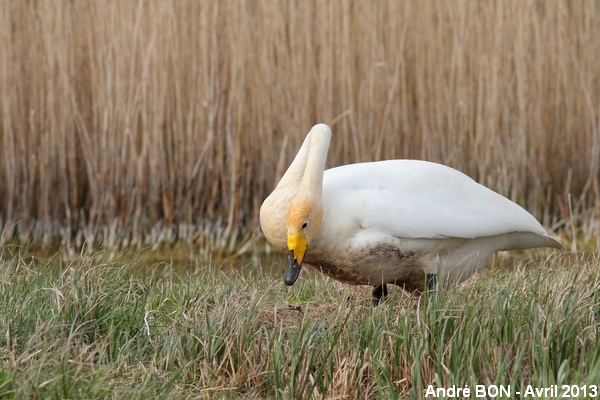
|
You could imagine that this Whooper Swan could make a knot with its neck ů |
| [To know more about the Whooper Swan] [Next picture] [Previous picture] [Top] |
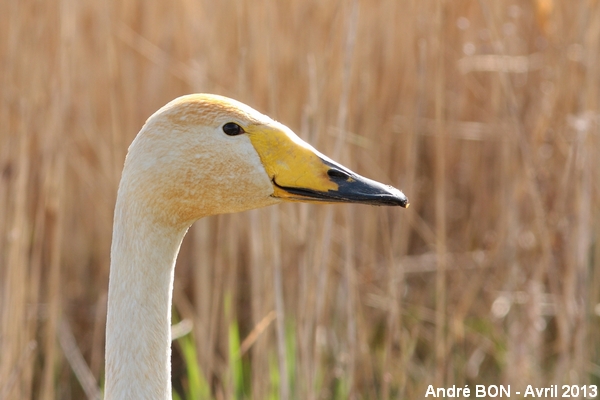
|
Here is a close-up picture of the bill providing a good view of the separation between the yellow area and the black area, then allowing to confirm the species identification. |
| [To know more about the Whooper Swan] [Next picture] [Previous picture] [Top] |
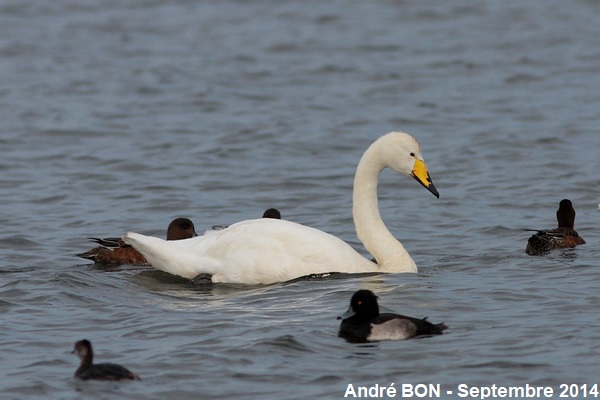
|
This times I am sure that this one is a wild bird. It is accompanied by one Tufted Duck, one Horned Grebe and several Eurasian Wigeons. |
| [To know more about the Whooper Swan] [Next picture] [Previous picture] [Top] |
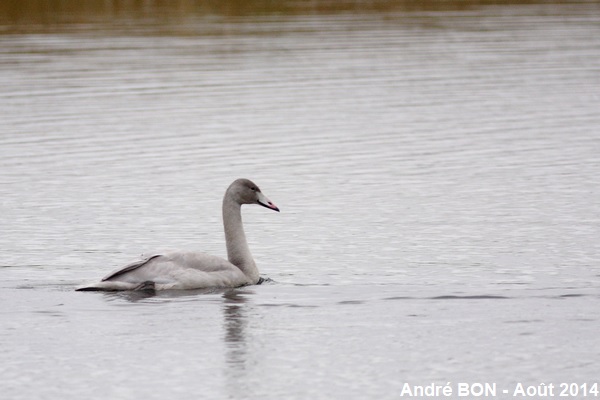
|
Here is one juvenile, with a more greyish plumage and a pink-tipped bill. |
| [To know more about the Whooper Swan] [Previous picture] [Top] |
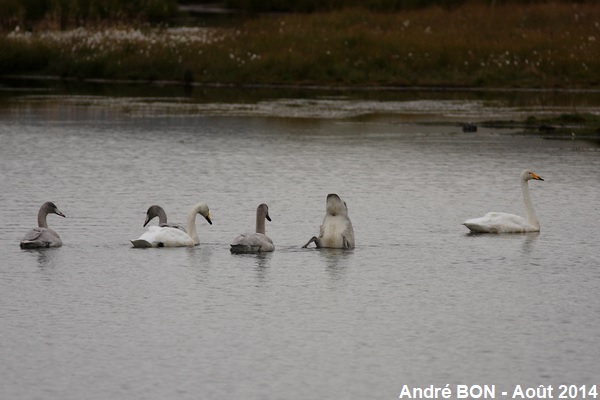
|
Here is the whole family. |